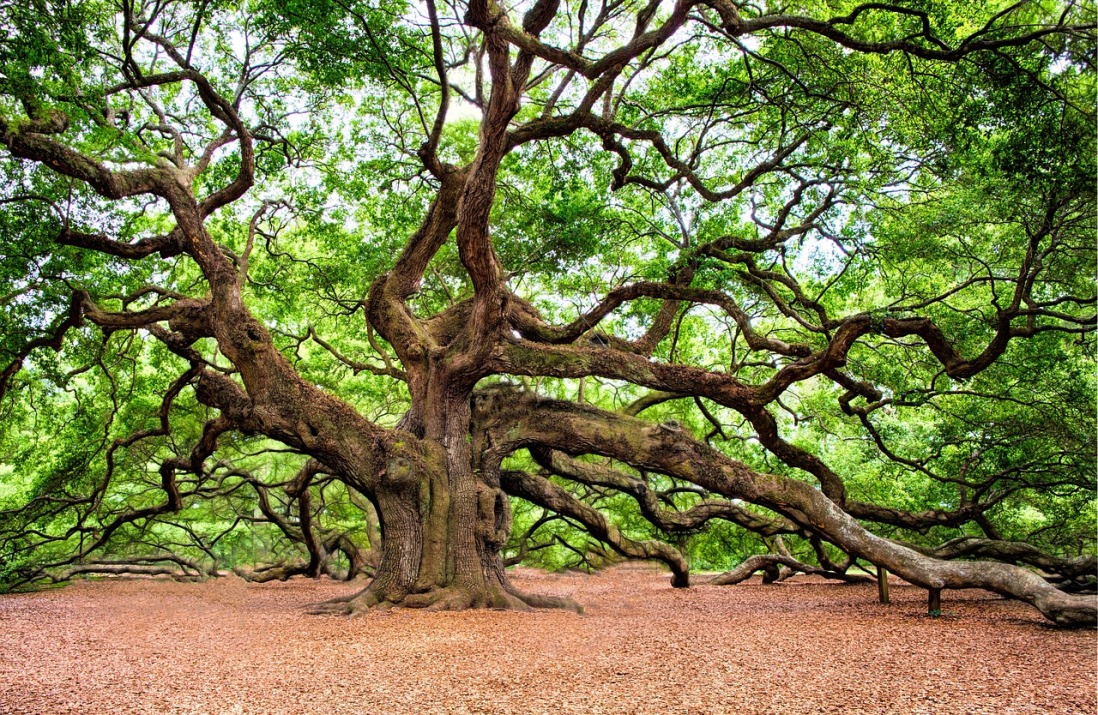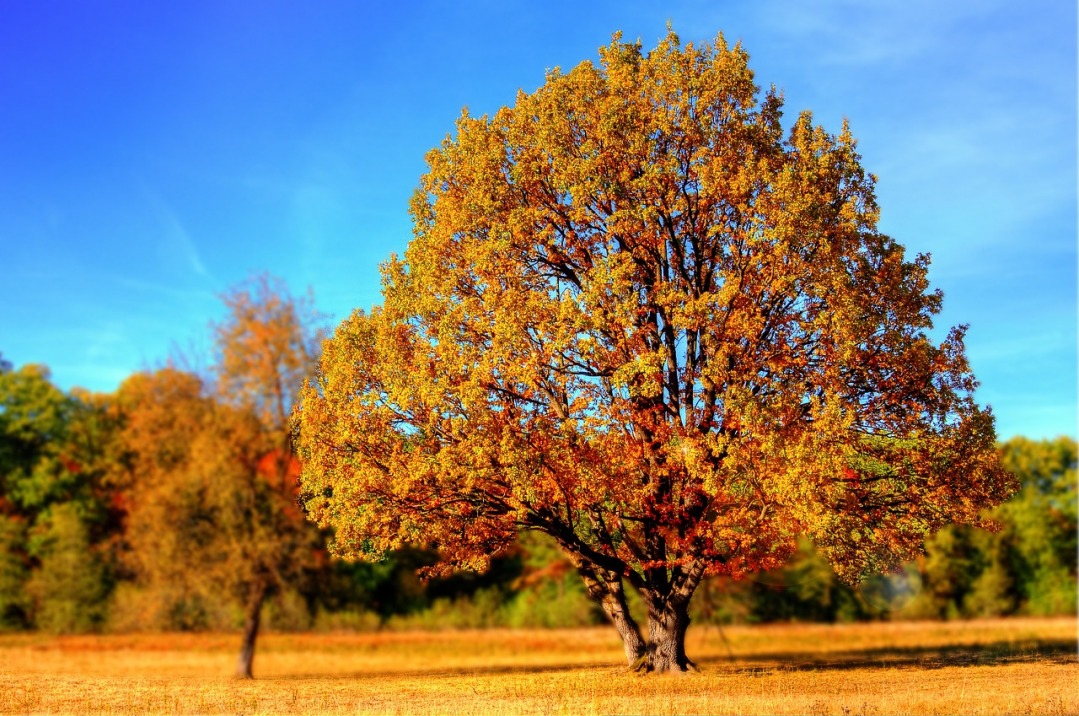
Sun City Tree Experts & Garden Advice
Pround Members of the National Gardening Association
Welcome to Sun City Tree Experts & Garden Advice, your trusted companion in the vibrant world of gardening and tree care. Our mission is simple yet profound: to offer exceptional and insightful advice to all who share our passion for nurturing nature.
At Sun City Tree Experts & Garden Advice, we understand that each plant, each tree, is more than just a part of your garden; they are the living, breathing essence of your outdoor sanctuary. That's why our team, comprised of seasoned arborists and gardening enthusiasts, is dedicated to providing you with the most reliable, up-to-date, and practical information.
Whether you're a seasoned green thumb or just starting to explore the wonders of your garden, we're here to guide you. Our content is crafted to cater to all levels of expertise, ensuring that every reader finds value and inspiration in our pages.
From the intricate art of tree pruning to the delicate balance of soil nutrients, we cover a broad spectrum of topics. Our advice spans from basic plant care to advanced arboriculture techniques, always aiming to enhance both the health of your plants and the beauty of your garden.
At Sun City, we believe that a well-informed gardener is the best gardener. Thus, we continually update our resources to reflect the latest trends, research, and best practices in the field. Our goal is to empower you with knowledge, enabling you to make informed decisions that benefit both your green space and the environment.
Join us on this green journey, and let's grow together with Sun City Tree Experts & Garden Advice – where every leaf, branch, and root matters!
- The Sun City Tree Team


The Essential Benefits of Regular Professional Tree Service
A Guide by Your Gardening Expert
Trees are the silent guardians of our gardens, providing shade, beauty, and a sense of tranquility. However, like any living being, they need care and attention to thrive. As a gardening expert, I want to highlight the importance and benefits of regular professional tree service. This service is not just about maintaining the aesthetic appeal of your garden but also about ensuring the health and safety of your trees and property.
1. Health of the Trees
The primary benefit of regular tree service is maintaining the health of your trees. Professionals can identify diseases and pests early on, preventing them from spreading and causing further damage. Pruning is a critical aspect of this service. By removing dead, diseased, or weak limbs, professionals encourage the growth of healthy branches and leaves. This process also allows for better air circulation and sunlight exposure, essential for the tree's overall health.
2. Safety Measures
Overgrown or dead branches pose a significant risk. They can fall during storms or high winds, causing damage to property, or worse, injuring someone. Regular tree service includes the removal of these hazardous limbs, ensuring a safer environment for your family and community.
3. Aesthetic Appeal
Well-maintained trees significantly enhance the aesthetic appeal of your garden. Professional arborists know how to shape trees in a way that complements your landscape design. This not only increases the curb appeal of your property but can also potentially increase its market value.
4. Longevity of Trees
Regular tree service contributes to the longevity of your trees. By addressing issues early and ensuring proper care, trees can live longer, healthier lives. This is particularly important for heritage trees that have been a part of the landscape for generations.
5. Better Fruit Production
For those who have fruit trees, regular pruning and maintenance can lead to better fruit production. Professional tree service ensures that your fruit trees have the right conditions for producing a bountiful harvest.
6. Disease Prevention
Trees are susceptible to various diseases. Regular check-ups by a professional can prevent the spread of these diseases to other plants in your garden. Early detection and treatment can save not only the affected tree but also the surrounding greenery.
7. Expert Advice
Lastly, regular interaction with tree service professionals provides you access to expert advice. They can guide you on the best care practices, suitable species for your garden, and how to tackle common issues.
Regular professional tree service is an investment in the health and beauty of your garden. It ensures the safety of your property and contributes to the overall wellbeing of your landscape. Remember, healthy trees mean a healthy environment. So, take the time to schedule regular check-ups for your trees and witness the difference it makes to your garden and its inhabitants.
Check out our friends for more help with your tree service needs. treeservicebastrop.com
Can you find Quality Tree Service in a
Small Town?
In the heart of Texas, nestled between the bustling urban centers of Austin and Houston, lie the charming cities of Elgin and Manor. These communities, known for their rich history and vibrant culture, are also home to some of the most beautiful landscapes in the state. Elgin Landscaping, Tree & Lawn, a local company, has been at the forefront of transforming these green spaces into picturesque and sustainable environments.
Expertise in Tree Care and Maintenance
Trees are the backbone of any landscape, providing not only aesthetic beauty but also environmental benefits. Elgin Landscaping, Tree & Lawn has established itself as an expert in tree care, offering a range of services that ensure the health and longevity of these natural giants. From routine pruning to disease management, their team of certified arborists employs the latest techniques and knowledge to maintain the vitality of trees in both residential and commercial settings.
Pruning and Trimming: A Cut Above the Rest
Pruning and trimming are essential for the health and safety of trees. Incorrect pruning can lead to tree stress, disease, and even death. The professionals at Elgin Landscaping, Tree & Lawn understand the intricacies involved in this process. They assess each tree's individual needs, considering factors like species, age, and location, to determine the best approach for pruning and trimming. This not only enhances the tree's appearance but also promotes healthy growth and development.
Disease Diagnosis and Treatment: Saving Elgin’s Trees
Trees, like any living organism, are susceptible to diseases. In Elgin and Manor, common tree diseases include Oak Wilt, Pine Bark Beetle infestations, and Cotton Root Rot. The company's expertise in diagnosing and treating these diseases has saved countless trees from premature death. By using environmentally friendly treatments and preventative measures, they help maintain the ecological balance and beauty of the area's landscapes.
Tree Removal: Safety and Precision
Sometimes, tree removal becomes necessary, whether due to disease, storm damage, or safety concerns. Elgin Landscaping, Tree & Lawn approaches this task with the utmost care and precision. They use state-of-the-art equipment and techniques to ensure that the removal process is safe and efficient, minimizing any potential damage to surrounding property.
Lawn Care: More Than Just Mowing
Beyond tree services, Elgin Landscaping, Tree & Lawn offers comprehensive lawn care. Understanding that a healthy lawn is the foundation of a great landscape, they provide services such as mowing, fertilization, weed control, and aeration. These services are tailored to the specific needs of the local climate and soil, ensuring that lawns are lush, green, and healthy year-round.
Landscaping: Designing Dreams into Reality
Landscaping is an art, and Elgin Landscaping, Tree & Lawn has mastered this art with their creative and innovative designs. They work closely with clients to bring their vision to life, whether it's a serene garden, a functional outdoor living space, or an ornate floral arrangement. The company's attention to detail and commitment to quality has resulted in some of the most breathtaking landscapes in Elgin and Manor.
Sustainability: A Core Principle
In today's world, sustainability is more important than ever. Elgin Landscaping, Tree & Lawn is dedicated to practices that are environmentally responsible. This includes using organic fertilizers, implementing water-saving irrigation systems, and promoting native plant species that thrive in the local climate. Their approach not only beautifies the landscape but also contributes to the overall health of the ecosystem.
Community Involvement: Rooted in Local Values
Elgin Landscaping, Tree & Lawn is more than just a business; it's a part of the community. The company actively participates in local events and initiatives, contributing to the beautification of public spaces and supporting local environmental causes. Their commitment to the community is evident in every project they undertake, big or small.
The Future of Landscaping in Elgin and Manor
As Elgin and Manor continue to grow and evolve, the role of companies like Elgin Landscaping, Tree & Lawn becomes increasingly vital. Their commitment to quality, sustainability, and community involvement positions them as leaders in the landscaping industry. With each tree planted, lawn cared for, and landscape designed, they are not just enhancing individual properties; they are enriching the entire community.
A Legacy of Green Excellence
Elgin Landscaping, Tree & Lawn represents the best of what a local business can be – experts in their field, committed to their clients and community, and stewards of the environment. As they continue to serve the residents of Elgin and Manor, their legacy of transforming and maintaining beautiful, sustainable landscapes will undoubtedly grow, just like the trees they so expertly care for.
Here is a good example of a tree service company providing quality services to a small Texas town.


Understanding the Growth Rate of Trees: A Comprehensive Insight
Trees are remarkable organisms, essential for life on Earth, providing oxygen, shelter, and resources for countless species, including humans. Their growth rates, which can vary widely among species, are influenced by a multitude of factors including genetic traits, environmental conditions, and care practices. This article delves into the intricacies of tree growth, exploring how fast trees grow and the factors that influence this growth.
The Basics of Tree Growth
Trees grow in two primary ways: in height and in girth. This growth is facilitated by the tree's meristem tissue, which is found in the tips of shoots and roots. The growth in height is primarily due to the activity in the apical meristems at the tips, while the increase in girth is due to the lateral meristems or cambium, which lies between the bark and the wood.
Factors Affecting Tree Growth
Species Characteristics: Different tree species grow at different rates. For example, the Royal Empress Tree (Paulownia tomentosa) is known for its rapid growth, potentially growing up to 15 feet in a year under optimal conditions. In contrast, the Bristlecone Pine (Pinus longaeva) grows very slowly, often less than an inch a year.
Environmental Conditions:
Sunlight, water, soil quality, and temperature significantly influence growth rates. Trees require adequate sunlight for photosynthesis. Water availability affects a tree's ability to transport nutrients. Soil quality impacts root growth and nutrient uptake. Temperature influences metabolic rates within the tree.
Age and Maturity:
Younger trees tend to grow more quickly than older trees. As a tree matures, its growth rate typically slows down.
Location and Spacing:
Trees in a forest compete for resources and may grow slower than those in open spaces with fewer competitors.
Care and Maintenance:
Proper pruning, fertilization, and pest management can significantly impact growth rates.
Measuring Tree Growth
Tree growth is commonly measured in two ways: diameter at breast height (DBH) and annual height increase. DBH is measured at 4.5 feet above ground level and is a common method for estimating a tree's age and health. Height growth can be observed by measuring the distance between bud scars on a branch.
Fast-Growing Tree Species
Some species are known for their rapid growth. These include:
Hybrid Poplar: Can grow up to 8 feet per year.
Weeping Willow: Known for its quick growth and ability to add up to 10 feet in a year.
Eucalyptus: Certain species can grow up to 10 feet per year.
Slow-Growing Tree Species
Conversely, some species are notable for their slow growth:
Japanese Maple: Grows slowly, adding only a few inches to a foot per year.
Norway Spruce: It can take decades to reach full maturity.
The Impact of Climate Change on Tree Growth
Climate change is altering growth patterns in many tree species. Increased levels of carbon dioxide can enhance photosynthesis, potentially speeding up growth. However, climate change also brings about extreme weather conditions and temperature shifts, which can stress trees and affect their growth negatively.
Urban vs. Rural Growth Rates
Trees in urban environments often face different challenges compared to rural trees. Pollution, limited space, and poor soil quality in urban areas can inhibit growth. In contrast, trees in rural areas, with more space and better environmental conditions, often grow more quickly and healthily.
The Role of Trees in the Environment
Beyond their growth, trees play a crucial role in the environment. They absorb carbon dioxide, produce oxygen, provide habitats for wildlife, and contribute to the overall ecosystem's health. Understanding their growth patterns is essential for effective conservation and urban planning.
Creating Beautiful Gardens with Professional Landscaping: An Exploration of Aesthetic and Functional Excellence
The allure of a beautifully landscaped garden is undeniable. It's a serene retreat, a splash of nature's palette in your own backyard, and a testament to the harmonious balance between human creativity and natural beauty. Professional landscaping companies have mastered this art, blending horticultural expertise with design finesse to transform ordinary spaces into breathtaking outdoor sanctuaries. This article delves into how these experts craft these verdant havens, focusing on their approach to design, plant selection, sustainability, and maintenance.
1. The Art of Landscape Design
At the heart of every stunning garden is a well-thought-out design, a blueprint that guides the transformation from mundane to magnificent. Professional landscapers begin with a thorough assessment of the space, considering factors like soil type, climate, topography, and the existing ecosystem. This initial evaluation is crucial as it informs the choice of plants, the design theme, and the functional aspects of the garden.
Design themes can vary widely, from traditional English gardens to modern minimalist landscapes, each with its unique charm. Professionals adeptly choose a theme that not only complements the architecture of the home but also reflects the homeowner's personality and lifestyle. The result is a cohesive and personalized outdoor space that resonates with the homeowner. If you are looking for help with your landscaping, reach out to our friends in Dripping Springs TX. landscapingdrippingsprings.com
2. Plant Selection and Arrangement
The soul of a garden lies in its plant life. Landscaping experts possess a deep understanding of horticulture, enabling them to select plants that thrive in the specific conditions of the garden. They consider factors such as plant hardiness, growth patterns, seasonal changes, and maintenance needs. The aim is to create a visually appealing and sustainable ecosystem.
Arrangement and placement of plants are equally important. Professionals skillfully arrange plants to create depth, harmony, and balance. They play with colors, textures, and sizes to craft a visual narrative that unfolds through the seasons. The strategic placement of trees, shrubs, flowers, and grasses can also address practical needs, like providing shade, enhancing privacy, or controlling erosion.
3. Embracing Sustainability
Today's landscaping transcends mere aesthetics. There is a growing emphasis on sustainability and environmental stewardship. Professional landscapers are increasingly adopting eco-friendly practices, such as using native plants that require less water and are more resistant to local pests. They also employ organic gardening techniques, avoiding harmful chemicals to encourage a healthy, natural ecosystem.
Water conservation is another key aspect of sustainable landscaping. Professionals incorporate features like rain gardens, drought-tolerant plants, and efficient irrigation systems to minimize water usage. Such practices not only protect the environment but also reduce maintenance costs and efforts for the homeowner.
4. Incorporating Functional Elements
A garden is more than just a visual spectacle; it's a living, functional space. Landscaping professionals understand this and integrate functional elements into their designs. These might include pathways, seating areas, water features, or outdoor kitchens. These features are designed to complement the garden's aesthetic while enhancing the usability and enjoyment of the outdoor space.
Pathways, for example, are not only practical but can also be designed as a focal point, leading visitors on a journey through the garden. Seating areas and patios offer spaces for relaxation and entertainment, while water features like fountains or ponds add a calming, sensory experience to the garden.
5. Ongoing Maintenance and Care
The creation of a garden is just the beginning. To ensure its lasting beauty and health, ongoing maintenance is essential. Professional landscaping companies often provide maintenance services, including regular pruning, weeding, fertilizing, and pest control. This ensures that the garden remains a vibrant and thriving ecosystem throughout the year.
They also offer seasonal services, such as spring planting, fall cleanup, and winter preparation, to keep the garden in top condition. This ongoing care is vital for the garden's longevity and helps avoid costly overhauls in the future.
A professionally landscaped garden is a fusion of art, science, and nature. It's a testament to the skill and creativity of landscape professionals who bring together diverse elements to create a harmonious and functional outdoor space. From the initial design to the final touches of maintenance, each step is executed with precision and care, ensuring that the garden not only looks magnificent but also serves as a sustainable and enjoyable extension of the home. In today's fast-paced world, such a garden becomes not just a luxury, but a necessary haven for relaxation, reflection, and connection with nature.
Gardening in Central Texas: A Guide to Flourishing Flora
Understanding the Climate and Soil
Central Texas is characterized by its hot summers, mild winters, and relatively low rainfall, making it unique for gardening. The soil here varies from sandy loam to heavy clay, so it's crucial to understand your specific soil type. Amending the soil with compost can improve its quality, aiding in nutrient retention and drainage.
Choosing the Right Plants
Given the climate, native plants are your best bet. They are adapted to the region's conditions and require less water and maintenance. Consider Texas lantana, bluebonnet, or Turk's cap for color, and Texas sage or yaupon holly for foliage. For vegetable gardens, tomatoes, peppers, and okra thrive in the heat, while leafy greens like kale and spinach are ideal for cooler months.
Watering Wisely
Watering is crucial, especially during the hot, dry summer months. Early morning is the best time to water, reducing evaporation and giving plants time to absorb moisture before the heat sets in. Drip irrigation systems can be more efficient than sprinklers, targeting the water directly to the plant roots and minimizing waste.
Mulching Matters
Mulch is essential in Central Texas gardens. It helps retain soil moisture, keeps roots cool, and reduces weed growth. Organic mulches like hardwood chips or pine bark are popular choices, as they also add nutrients to the soil as they decompose.
Fertilizing and Pest Control
Choose fertilizers that are appropriate for your plants and soil type. Organic fertilizers can be particularly beneficial as they improve soil health over time. For pest control, consider integrated pest management (IPM) practices that focus on long-term prevention with minimal harm to the environment.
Seasonal Care
Spring is the time for planting most annuals and perennials. Summer requires vigilant watering and mulching. Fall is ideal for planting trees and shrubs, giving them time to establish roots before the heat of summer. Winter is the time for pruning many plants and preparing the soil for spring planting.
Gardening Resources
Local nurseries and Texas A&M AgriLife Extension are excellent resources for Central Texas gardeners. They offer plant recommendations, pest identification, and soil testing services.
Gardening in Central Texas can be a rewarding experience. By understanding the unique climate and soil conditions, choosing the right plants, and following best practices in watering, mulching, and seasonal care, you can create a vibrant and sustainable garden that thrives year-round.